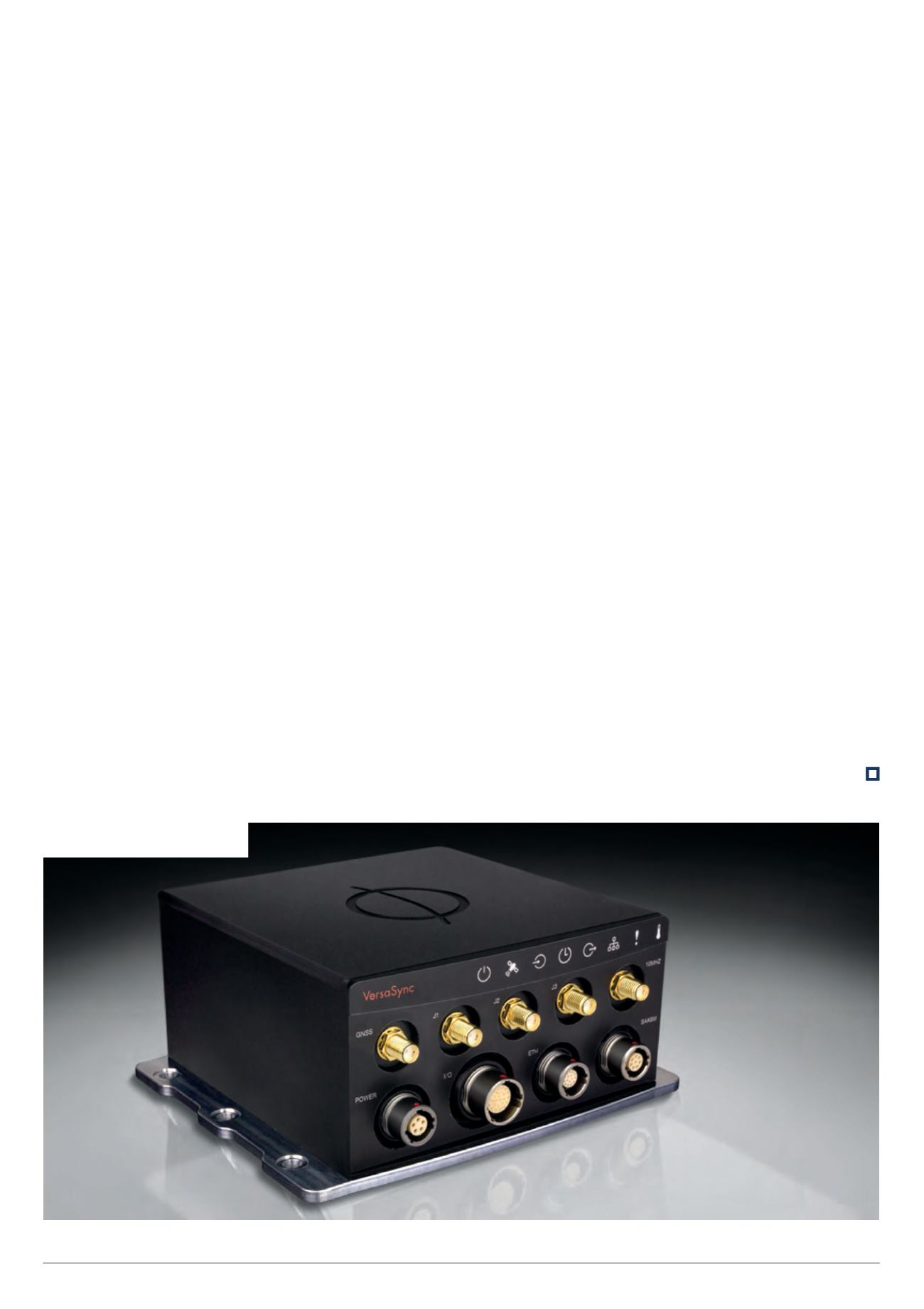

57
GPS master clock and network time
server that delivers accurate, software-
configurable time and frequency signals
in all circumstances, including GNSS-
denied environments”.
He told us that its compact size and
high level of ruggedisation (to MIL-
STD 810G) make VersaSync suitable
for mobile air/land/sea applications in
harsh environments. “Its small footprint
allows for easy integration of the time
and frequency functionality into systems
architecture,” he added.
In addition, Sohn remarked that
VersaSync accommodates an OCXO
or CSAC oscillator, allowing the unit to
maintain frequency and time accuracy
for long periods of GPS/GNSS outage.
“It can also be re-synchronised by an
external reference,” he said.
It provides time and frequency
interfaces in all formats: NTP, PTP, IRIG,
1PPS, 10 MHz, serial and more, with
other interfaces available upon request;
for military applications, SAASM GPS is
also available.
Reference Technologies had on
display a version of its Hummingbird,
a VTOL unmanned craft that combines
a central ducted fan with peripheral
multiple rotors, giving it an unusually long
flight duration for this type of craft.
Model I is battery powered with a
medium flight duration and light payload
capacity, while Model II is a hybrid with
an IC engine generating power for its
electrically driven 19 in central counter-
rotating dual fans and six external rotors.
Model III, which uses eight external rotors
in conjunction with a 24 in central ducted
fan, provides a payload capability of
more than 20 lb, and flight times in the
region of six hours.
Each version is equipped with multiple
hard points so that it can carry and
release mission-specific payloads. Direct
flight control and pre-programmed
flight plans are managed via a range of
ground control interfaces.
Allen Bishop told us that ‘Gen 2’ is
currently in development and that this
will have the capability to carry a 75 lb
payload for a flight duration of about ten
hours.
HiTec RCD has recently launched
IP67 industrial servos for UAV applications,
Shawn Spiker told us. These feature a
digital MOSFET amplifier, a brushless
motor, a magnetic encoder position
sensor, multi-rotation capability feedback,
hardened steel gears with low backlash
and a rugged aluminium alloy case.
Moog recently invested in an
additive manufacturing business, Tim
Wutz told us. It is a company called
Linear Mold and Engineering, of which it
has acquired a 70% stake.
Based in Livonia, Michigan, Linear has
120 employees and specialises in metal
additive manufacturing. The company
provides engineering, manufacturing
and production consulting services to
companies across a wide spectrum,
including the unmanned vehicle industry.
Kokam announced a new battery
at Xponential for UAV use. It has a
lithium-polymer chemistry originally
developed for military use, now available
for commercial applications.
Ike Inkwan Hong told us that the battery
“has an energy density of 265 W/h/kg
compared with 180-200 for established
technology. That means 30-40% more
energy for the same weight, so saves 30-
40% space and creates more flight time.”
Ike Inkwan Hong added that batteries
of similar technology were chosen for the
Solar Impulse project’s round-the-world
solar-powered aircraft.
Unmanned Systems Technology
| June/July 2016
The VersaSync time and frequency
system, from Spectracom









